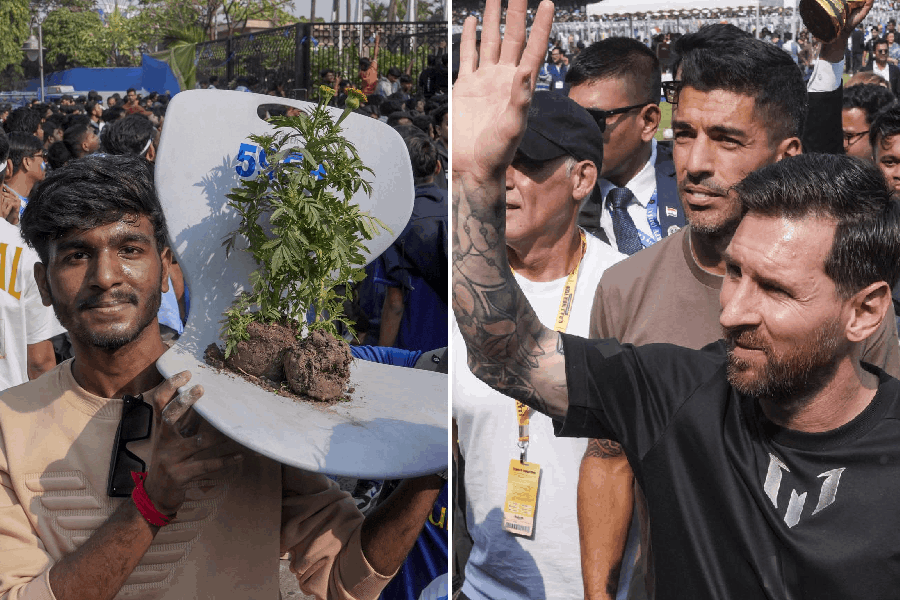For decades, blood cancer diagnoses have induced instant anxiety. But there is no need to panic if a patient is diagnosed with blood cancer these days, believes Dr Anupam Chakrapani, senior consultant, department of haematology, and programme coordinator of bone marrow transplantation at Apollo Gleneagles Hospitals, Kolkata. “Blood cancer has been among one of the most common causes of death, especially in the young and adult population, and cases of blood cancer are increasing every year. But nowadays we have the treatment available that can help patients recover,” explained Dr Chakrapani. According to statistics cited by Dr Chakrapani, developed nations like the United States have more than two lakh cases of blood cancer every year, while in India, the numbers are even higher then western world , but due to unavailability of timely test lot of cases remains undiagnosed. “Blood cancer is a disease that can happen at any age. It basically involves an uncontrolled proliferation or formation of blood components, be it red blood cells, white blood cells, or platelets,” said Dr Chakrapani. Generally, blood cancer is divided into two broad types — acute and chronic. Acute blood cancer is characterised by a rapid surge in the number of immature white blood cells and is most common in children or adults, with its subtypes being acute myeloid leukaemia and acute lymphoblastic leukaemia. Meanwhile, chronic blood cancer is characterised by the increase in the number of relatively mature, but still abnormal, white blood cells, and is more frequently detected in those above 50 or 60 years old, with the subtypes being chronic myeloid leukaemia and chronic lymphocytic leukaemia. A separate category of blood cancer can also occur in the form of lymphoma, “which has some 45 different subtypes and must be diagnosed carefully. Symptoms include swelling in different parts of the body, such as the neck, the groin, or the axilla.” For those aged 50 or above, multiple myeloma is another common type of blood cancer and may show up through symptoms like “bone pain, anaemia, or renal failure.” According to Dr Chakrapani, acute leukaemia does not usually show discernible symptoms in adults, though in children there may be instances of weakness, lethargy, bleeding or unexplained fever. “For acute cancers, we usually do a bone marrow examination or a flow cytometry study to confirm the diagnosis,” observed Dr Chakrapani, who singled out acute lymphoblastic leukaemia as the most common in children, with an incidence of 20,000 cases per year in India with peak age 2-5 years . Speaking about the treatment options, Dr Chakrapani said that “once the exact type of blood cancer is diagnosed, there are different modalities of treatment available. There is chemotherapy, immunotherapy, and radiotherapy. In some cases, bone marrow transplant is done to completely cure the disease.” “For children, lymphoblastic leukaemia is curable in 70 to 80 percent of cases, whereas for adults, acute myeloid leukaemia can be cured in 40 to 50 percent of patients,” said Dr Chakrapani. In cases where blood cancer like Lymphoma and Myeloma where patient relapse after chemotherapy , Dr Chakrapani advocates the use of allogeneic or autologous transplantations that “can control the disease, allowing the patient to survive for five, 10, even 15 years.” For patients suffering from lymphoma, Dr Chakrapani highlighted the effects of “targeted therapy in terms of rituximab, brentuximab, and nivolumab, which attack the specific clonal cancer cells in the lymphoma.” He also added that “should lymphoma be detected at an early stage, 90 percent of patients can be cured completely specifically in Hodgkins Lymphoma .” “The treatment and the facilities we have available here are comparable with the best institutions across India and the world. In most cases, we are able to cure patients completely and give them a very good quality of life. So, if you have a blood cancer diagnosis, there is nothing to worry about,” concluded Dr Chakrapani.
 Saturday, 13 December 2025
Saturday, 13 December 2025









